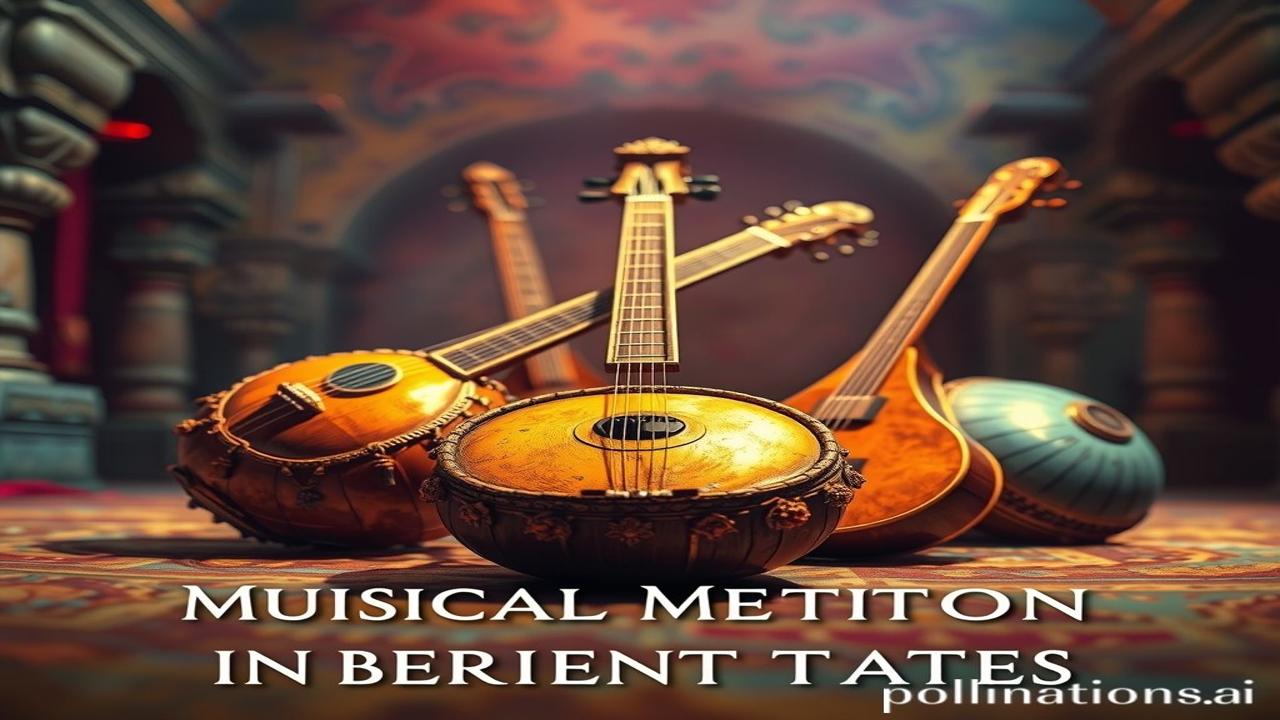Waqt Ki Dhool Mein Chhupi Sangeet Ki Awaaz: Ancient Texts Aur Musical Instruments
Kabhi socha hai, jo sangeet aaj hum sunte hain, uski roots kitni purani hain? Imagine karo, 5000 saal pehle, Indus Valley Civilization ki galiyon mein, ya phir Vedic Rishi ke ashram mein, kya instruments baj rahe honge? Waqt ki dhool mein kuch kahaniyan chhup jaati hain, lekin sangeet ki awaaz… woh toh hamesha se thi, hai, aur rahegi. Aaj, hum explore karenge un musical instruments ko, jinka zikr hamare ancient texts mein milta hai. Let’s dive in!
Sangeet Ki Utpatti: Ek Historical Jhalak
Sochne wali baat hai, sangeet kab shuru hua? Well, officially toh koi exact date nahi hai. But, hamare sabse purane texts – the Vedas – mein sangeet ka zikr hai. Think around 1500-500 BCE. Yeh woh time tha jab society structured ho rahi thi, rituals develop ho rahe the, and sangeet ek important part ban gaya.
Rigveda mein, Samaveda mein – saare mantras rhythm aur melody mein chant kiye jaate the. Samaveda toh poora sangeet ko dedicated hai! It’s the earliest known example of musical notation. Phir, humare ancient texts jaise Natya Shastra (2nd century BCE – 2nd century CE) mein detailed information milti hai about various instruments, their construction, and how they should be played.
Why is this important? Because these texts show us that sangeet wasn’t just entertainment. It was a spiritual tool, a way to connect with the divine, a form of social expression, and a part of daily life.
Zamini Sach: Us Zamane Ki Dhun, Us Zamane Ke Log
Imagine karo ek chhota sa village, near the banks of the Saraswati river. Sham ka waqt hai. Ma Rukmini aarti ki taiyari kar rahi hai. Aaj mandir mein utsav hai. Unke haathon mein ek ektara hai, ek simple sa instrument, lekin uski dhun mein aisi shakti hai ki poora gaon ek saath gaane lagta hai.
Raja Harshavardhana, apne court mein baithe hain. Tansen, unke darbari sangeetkaar, apne rudra veena se raag darbari baja rahe hain. Har taraf shaanti hai, lekin woh shaanti sangeet se bhari hui hai.
Ek yoddha, apne ghode par savaar, dhol ki beat sun raha hai. Dhol ki awaaz use yaad dilati hai apne desh ki, apne logo ki, aur use shakti deti hai ladne ki.
These instruments weren’t just things; they were lifelines, a part of their existence. Think about the artisans who crafted these instruments with their own hands, pouring their soul into each creation. Every instrument had a story to tell.
Dharohar Aur Pehchan: Aaj Bhi Goonjti Hai Woh Awaaz
Aaj bhi, hamare mandiron mein ghante aur shankh bajte hain. Classical music concerts mein sitar, sarod, aur tabla ki dhun sunai deti hai. Folk music mein dhol, nagada, aur been ki awaaz gaon ki mitti se judi hui hai.
Yeh instruments sirf museums mein nahi hain. They are alive in our traditions, our art forms, our festivals. They connect us to our past, to our Bharatiyata. They are a part of our modern identity, reminding us of who we are and where we come from. Sangeet, hamari dharohar hai, hamari pehchan hai.
Mazedar Tathya: Myths Aur Sach
Log samajhte hain ki “sitar” sirf Indian instrument hai, lekin bahut kam logon ko pata hai ki sitar actually Persian instrument “Sehtar” se derived hai! Interesting, right? It just shows how cultures and ideas have always been exchanging.
Drishya Aur Bhavnaen: Ek Anubhav
Feel karo…
- The smell of incense in the air as the veena player tunes his instrument.
- The smooth, polished feel of the tabla drums under your fingertips.
- The echoing sounds of the temple bells reverberating through the courtyard.
- The vibrant colors of the silk sarees worn by dancers as they move to the rhythm of the music.
- The taste of sweet prasad after a devotional song.
Yeh sab milkar ek poora anubhav banta hai. Sangeet sirf sunne ki cheez nahi hai, yeh mehsoos karne ki cheez hai.
Antim Vichar: Sangeet Hi Jeevan Hai
“Naad Brahma” – Sound is God. This ancient concept reflects the profound connection between music and the divine. Hamare purane texts mein sangeet sirf ek kala nahi thi, yeh toh jeevan ka ek tareeka tha. It’s a reminder that even in the loudest of times, sangeet can bring peace, joy, and connection.
“Sur hi saadhna, sur hi bhakti, sur hi mukti ka dwaar.”
